Spain’s culinary heritage is a vibrant tapestry of flavors, and its desserts are no exception. From the sun-drenched orchards of Valencia to the bustling streets of Barcelona, Spanish sweets reflect the country’s diverse cultural influences and rich history. This collection of 18 traditional Spanish desserts captures the essence of Spain’s sweet side, offering a delightful journey through its most beloved confections. Whether you’re a seasoned traveler or a curious foodie, these authentic treats promise to enchant your taste buds and transport you to the heart of Spain’s culinary tradition.
Tarta de Santiago

Tarta de Santiago is a centuries-old almond cake from Galicia, known for its simplicity and rich flavor. The cake is traditionally marked with the cross of Saint James, paying homage to the pilgrimage route of El Camino de Santiago. Made with ground almonds, eggs, and sugar, it offers a moist, dense texture.
This dessert is often enjoyed during religious festivals, adding a sweet note to spiritual celebrations. Surprisingly, it contains no flour, making it a gluten-free delight. Tarta de Santiago’s history dates back to the Middle Ages, a testament to its enduring popularity.
Churros con Chocolate
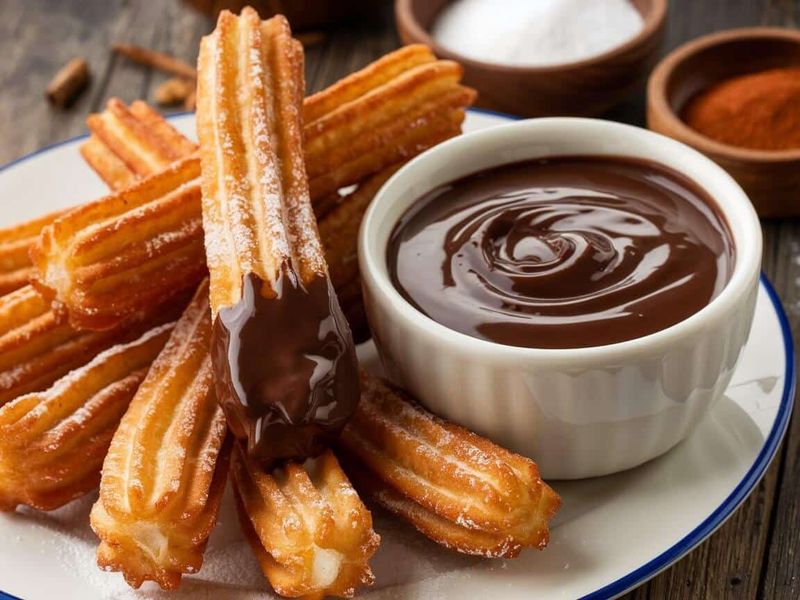
Churros con Chocolate, a quintessential Spanish indulgence, captures the essence of leisurely mornings in Madrid. These golden, crispy dough fritters are traditionally paired with a cup of thick, velvety hot chocolate.
Perfect for dipping, the churros offer a delightful contrast of textures: crunchy on the outside, soft and airy inside. This beloved treat is often enjoyed as a breakfast or afternoon snack. Its origins are debated, with some claiming it arrived with Portuguese explorers, while others believe it’s a native Spanish creation.
Either way, churros remain a must-try experience in Spain.
Turrón
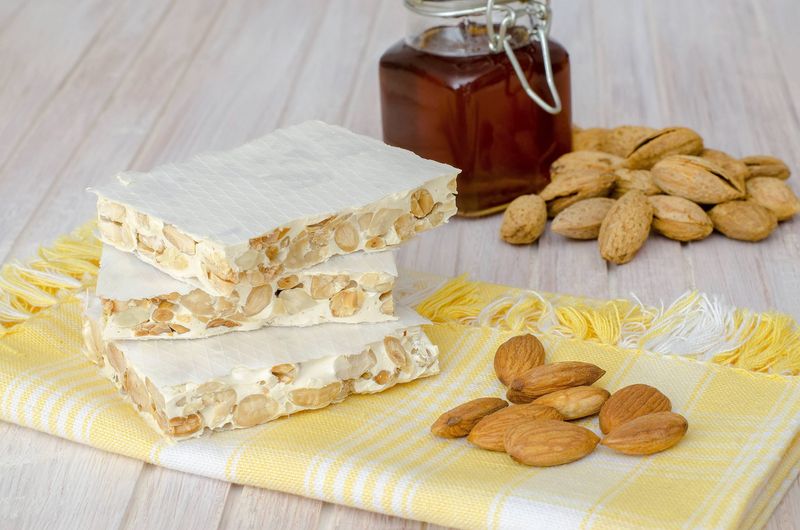
Turrón is a festive candy that graces Spanish tables, particularly during Christmas. Made with almonds and honey, it comes in two main varieties: the hard Alicante and the soft Jijona.
This sweet treat’s origins trace back to the Moors, who introduced almonds to Spain. Over time, Turrón became synonymous with Spanish holiday traditions, symbolizing joy and togetherness. The process of making Turrón requires skill, as the ingredients must be perfectly balanced to achieve the right texture and flavor.
The holiday season in Spain wouldn’t be the same without this beloved confection.
Crema Catalana
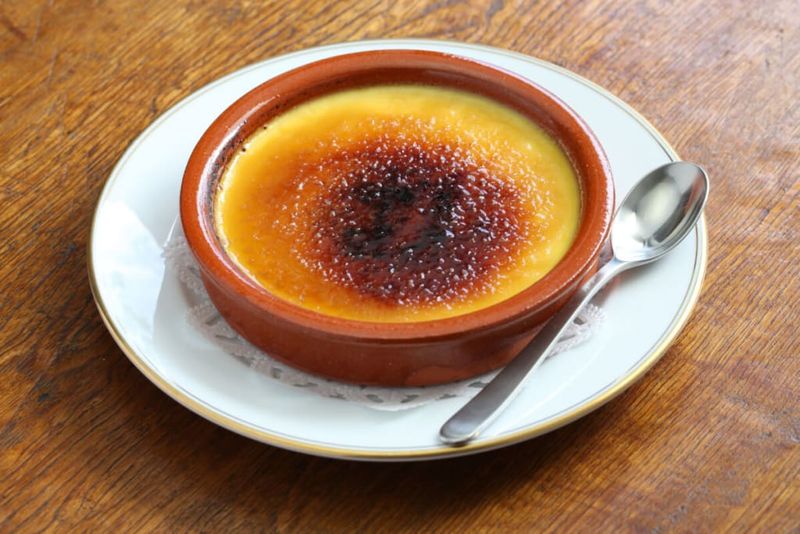
Crema Catalana, often hailed as Spain’s answer to crème brûlée, boasts a creamy custard base flavored with cinnamon and citrus. The dessert is topped with a caramelized sugar crust that provides a satisfying crunch.
It is a traditional Catalonian dessert enjoyed during special occasions like Saint Joseph’s Day. The preparation involves a delicate balance of ingredients to create its signature silky texture.
Despite its similarities to its French counterpart, Crema Catalana stands out with its unique flavor profile. This dessert’s rich history and regional pride make it a must-try for dessert connoisseurs.
Flan
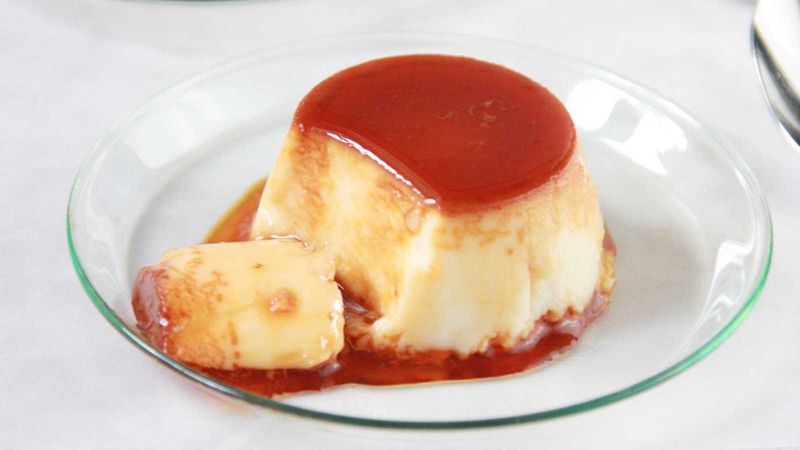
Flan, a beloved dessert across Spain, is known for its smooth, silky texture and caramel topping. Its origins are rooted in ancient Rome, but Spain has embraced and perfected this custard treat over centuries.
Flan is often served at family gatherings and celebrations, bringing a comforting sweetness to the table. The preparation requires patience, as the caramel must be carefully cooked to avoid bitterness.
Despite its simplicity, Flan is a staple in Spanish culinary traditions, cherished for its ability to balance sweetness with creamy indulgence. This timeless dessert continues to win hearts worldwide.
Polvorones

Polvorones are crumbly, melt-in-your-mouth cookies that play a starring role in Spanish Christmas celebrations. Originating from the Andalusian region, these treats are made with almond flour, sugar, and lard.
Their name derives from the Spanish word ‘polvo,’ meaning ‘dust,’ which reflects their delicate texture. Traditionally, Polvorones are enjoyed with family and friends, embodying the warmth and joy of the holiday season.
The making of Polvorones involves a gentle touch, ensuring they hold their shape before melting away with each bite. Their delicious simplicity makes them a cherished Spanish treat.
Leche Frita
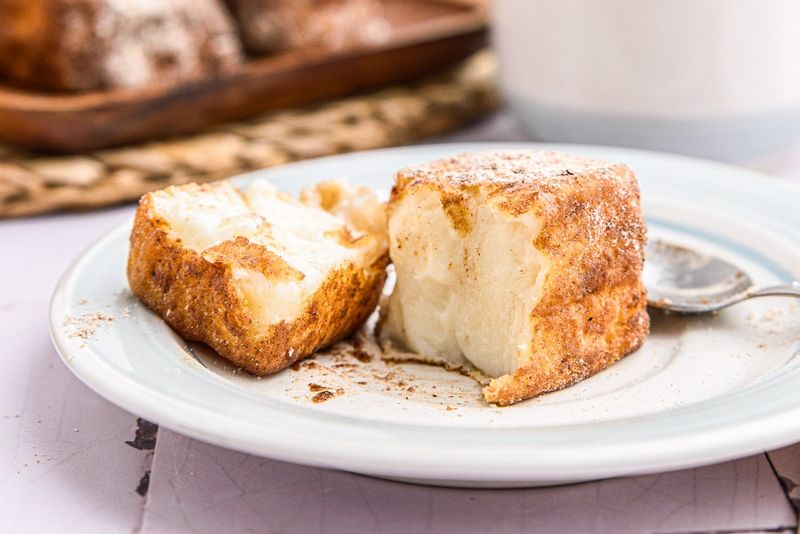
Leche Frita, translating to ‘fried milk,’ is a uniquely Spanish dessert that surprises with its delightful texture and taste. Originating from the north of Spain, it’s made by solidifying sweetened milk into thick squares, then frying them until golden.
The result is a dessert that’s crispy on the outside and creamy on the inside. Often served with a dusting of cinnamon and sugar, Leche Frita is a comforting treat, especially in colder months.
Its simplicity belies the complex flavors and textures that make it a beloved part of Spanish dessert culture. A must-try for adventurous eaters.
Tocino de Cielo
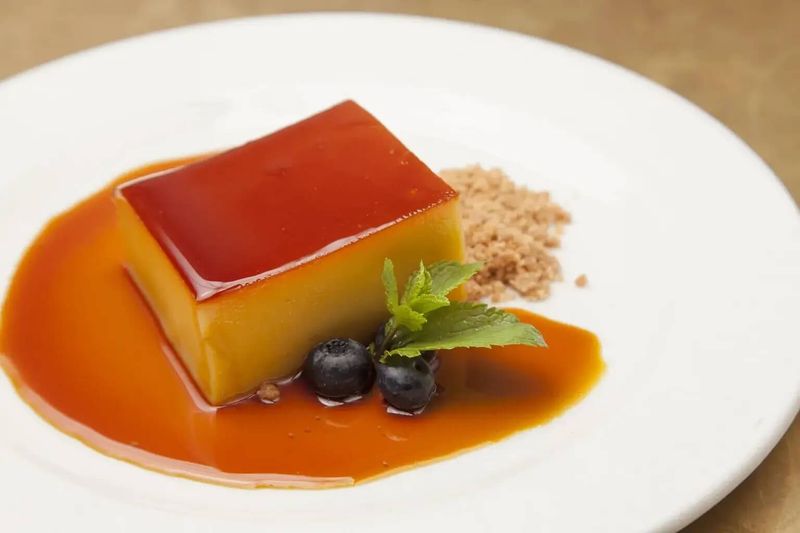
Tocino de Cielo, or ‘heaven’s bacon,’ is a rich, indulgent dessert originating from Andalusia. Made primarily with egg yolks and sugar, it features a smooth, glossy texture.
The dessert’s name reflects its divine taste, while its translucent appearance adds an element of elegance. Traditionally, Tocino de Cielo is enjoyed during festive occasions and religious celebrations.
Its creation dates back to convents, where nuns used leftover egg yolks after using egg whites for wine clarification. This historical link adds depth to its already intriguing story, making each bite a heavenly experience.
Pestiños
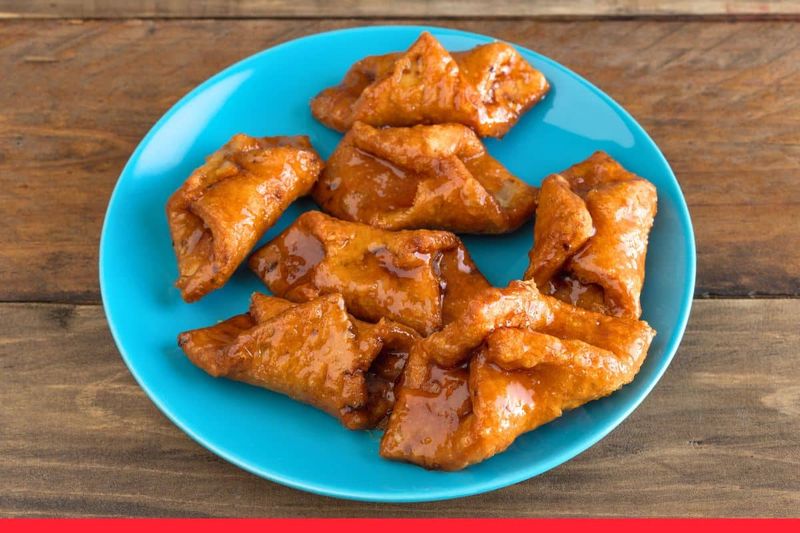
Pestiños are a delightful treat from southern Spain, traditionally consumed during Easter and Christmas. These fried pastries are made with flour, aniseed, and orange zest, then sweetened with honey or sugar.
Their origins can be traced back to Andalusia, where they were influenced by Moorish culinary practices. The making of Pestiños requires careful preparation to achieve their characteristic crunch.
The aromatic blend of spices and citrus makes Pestiños a memorable treat, evoking the festive spirit of Spanish holidays. Their unique flavor profile and cultural significance make them a must-try dessert.
Huesos de Santo
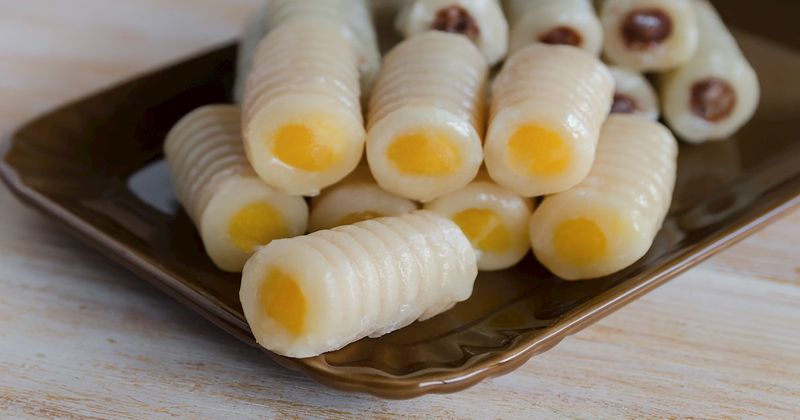
Huesos de Santo, or ‘saints’ bones,’ are a traditional Spanish dessert enjoyed during All Saints’ Day. Made with marzipan and filled with sweet egg yolk, these treats resemble bones in shape.
Their name and appearance might be peculiar, but their taste is delightful, with a soft, chewy texture. The making of Huesos de Santo involves delicate craftsmanship, requiring skill to shape and fill them perfectly.
This dessert’s unique appearance and historical significance make it a fascinating part of Spanish culinary tradition, connecting the past with present celebrations.
Buñuelos
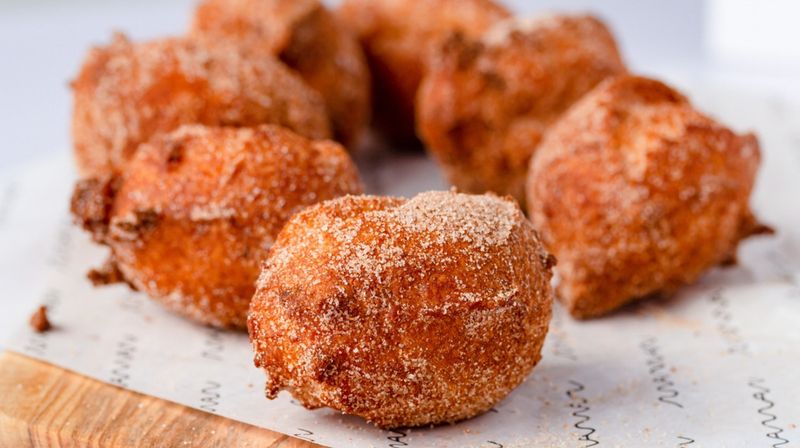
Buñuelos are light, fluffy fritters popular across Spain, often filled with sweet or savory ingredients. Their roots trace back to ancient times, with variations found throughout the Mediterranean.
In Spain, they are particularly enjoyed during festivals, adding a touch of sweetness to the celebrations. The process of making Buñuelos involves frying dough to golden perfection, resulting in a crispy exterior and soft interior.
Whether filled with cream, chocolate, or eaten plain, Buñuelos capture the festive spirit of Spanish culture, making them a beloved treat for all ages.
Ensaimada
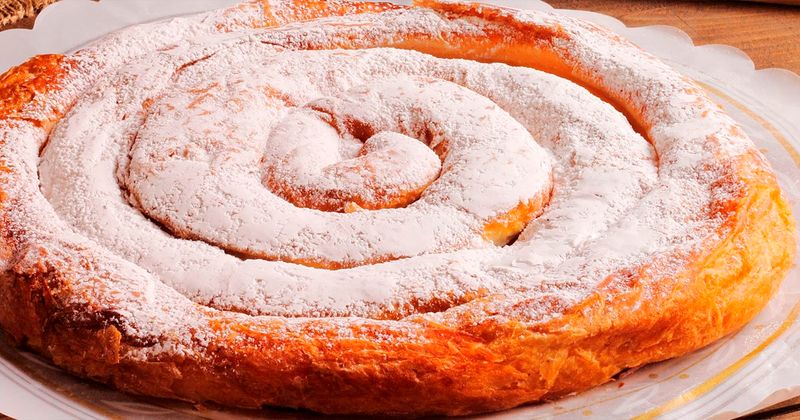
Ensaimada is a sweet pastry with origins in Mallorca, renowned for its spiral shape and delicate texture. Made with flour, sugar, and pork lard, it’s dusted with powdered sugar before serving.
This pastry is often enjoyed as a breakfast treat or during festive gatherings, highlighting its versatility. Its preparation requires patience, as the dough must rise slowly to achieve the desired lightness.
Ensaimada’s unique shape and flavor have made it a symbol of Mallorcan culinary tradition, with each bite offering a taste of the island’s rich heritage.
Yemas de Santa Teresa

Yemas de Santa Teresa are a sweet specialty from Ávila, made from egg yolks and sugar. These bright orange confections boast a smooth, melt-in-your-mouth texture.
Their creation is attributed to the Carmelite nuns, who crafted these treats as a tribute to Saint Teresa. Traditionally enjoyed during local festivities, they hold a special place in Ávila’s culinary heritage.
The making of Yemas requires precision to achieve their distinctive texture and flavor. This dessert’s simple ingredients and historical ties make it a cherished part of Spanish dessert culture.
Rosquillas
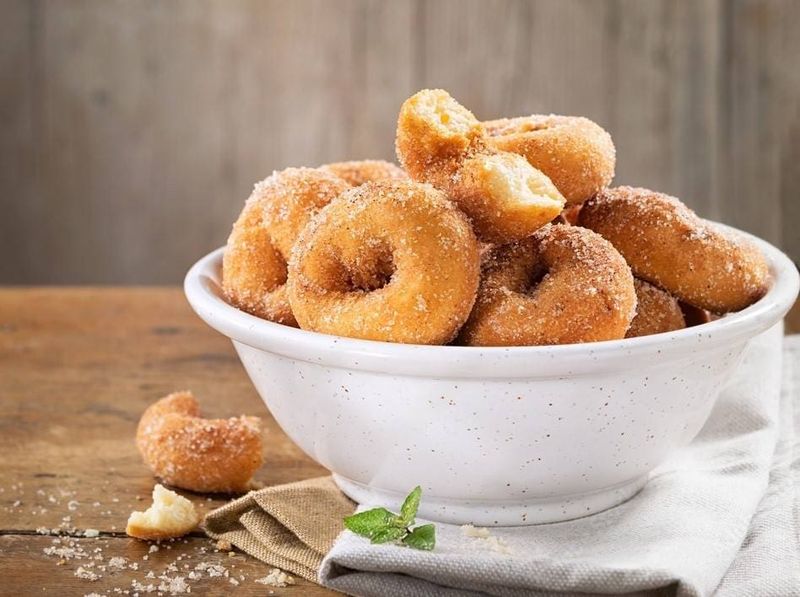
Rosquillas are traditional Spanish doughnuts, enjoyed during celebrations like Easter and local fairs. These ring-shaped pastries come in various forms, with some regions favoring a denser texture and others opting for a lighter, airy bite.
Their sweet glaze or sugar dusting adds a delightful touch, making them irresistible to those with a sweet tooth. Rosquillas’ preparation often involves family traditions, with recipes passed down through generations.
This dessert’s versatility and cultural significance make it a beloved treat across Spain, connecting families and communities through shared culinary heritage.
Natillas
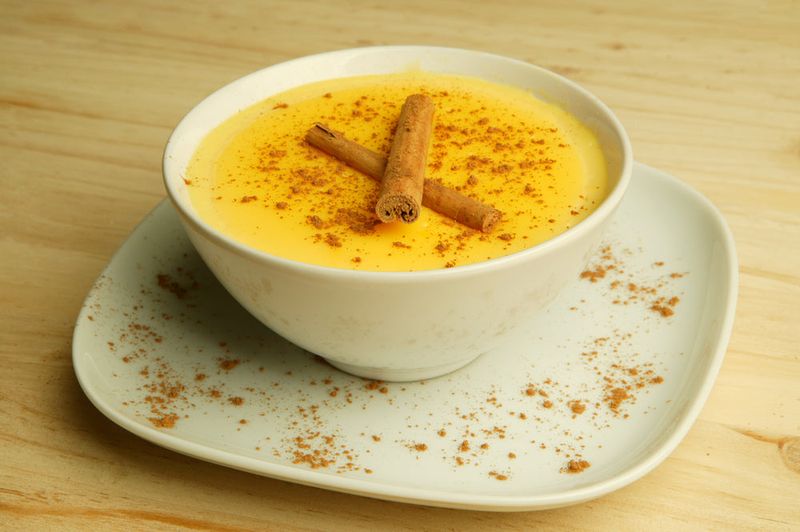
Natillas is a creamy custard dessert that holds a special place in Spanish homes. Flavored with vanilla and cinnamon, it offers a smooth, comforting texture reminiscent of childhood memories.
Often served in small bowls with a dusting of cinnamon, Natillas is a simple yet satisfying dessert. Its preparation requires gentle heating to achieve the right consistency without curdling.
This dessert’s nostalgic appeal and rich flavor make it a favorite in Spanish households, enjoyed by both young and old. Its simplicity and versatility ensure its place in Spain’s culinary tradition.
Frixuelos
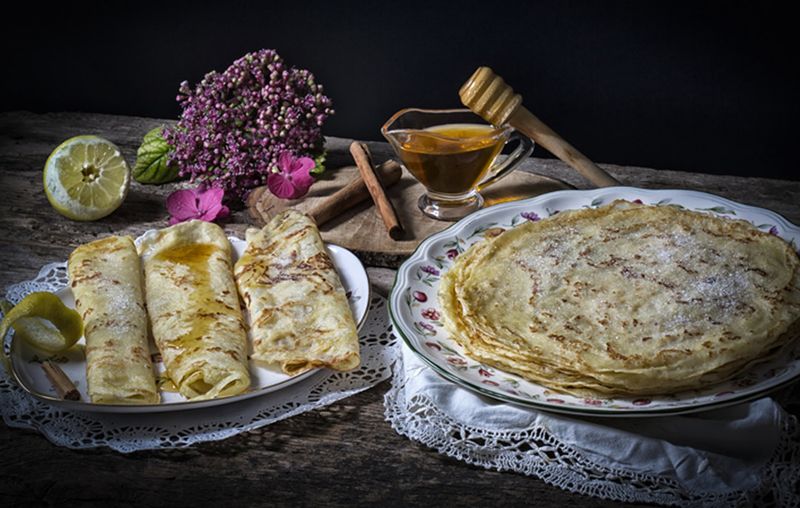
Frixuelos are thin, crêpe-like pancakes from the Asturias region, enjoyed during Carnival and other festivities. Made with flour, eggs, and milk, they are often sprinkled with sugar or drizzled with honey.
Their light, delicate texture makes Frixuelos a versatile treat, perfect for both sweet and savory fillings. The making of Frixuelos requires skill to achieve their thin, even consistency.
This dessert’s cultural roots and festive associations make it a cherished part of Asturian celebrations, offering a taste of the region’s vibrant culinary tradition.
Gató de Almendra
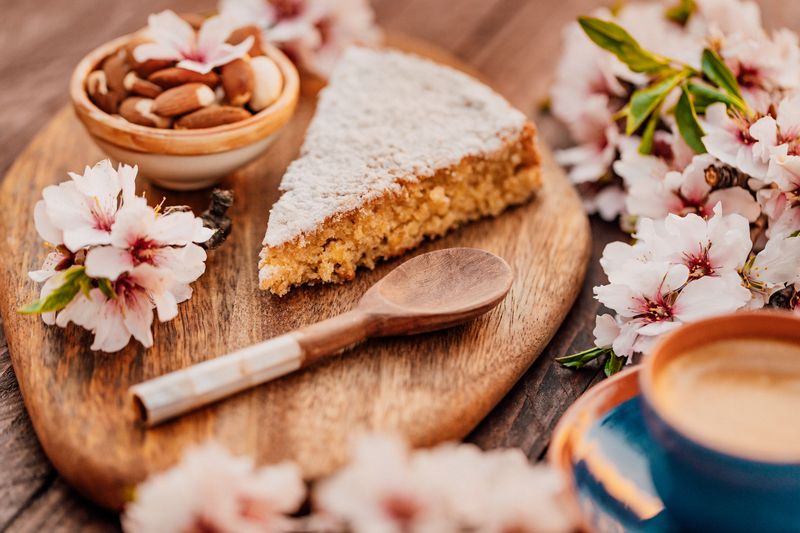
Gató de Almendra is a traditional almond cake from Mallorca, celebrated for its rich, nutty flavor and tender crumb. Made with ground almonds, eggs, and lemon zest, it offers a delightful balance of taste and texture.
This cake is often served during special occasions, accompanied by a chilled glass of sweet wine. Its preparation requires careful folding of ingredients to maintain its lightness.
Gató de Almendra’s simple elegance and regional significance make it a beloved part of Mallorcan dessert culture. Each slice offers a taste of the island’s culinary heritage.
Casadielles

Casadielles are sweet pastries from Asturias, filled with a mixture of walnuts, sugar, and anise. These pastry rolls are traditionally prepared during Christmas and Carnival.
The making of Casadielles involves rolling dough around the sweet filling, then frying or baking them to golden perfection. This dessert’s crunchy exterior and soft, flavorful interior make it a delightful treat.
Casadielles’ unique flavor and festive associations make them a cherished part of Asturian culinary traditions, connecting past and present through shared cultural celebrations.
Leave a comment